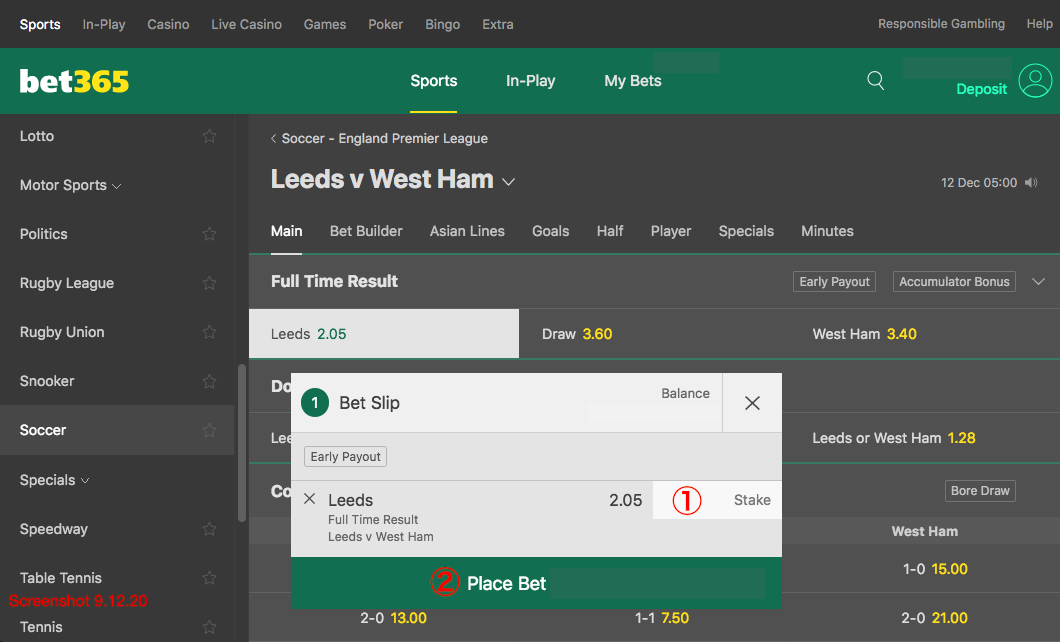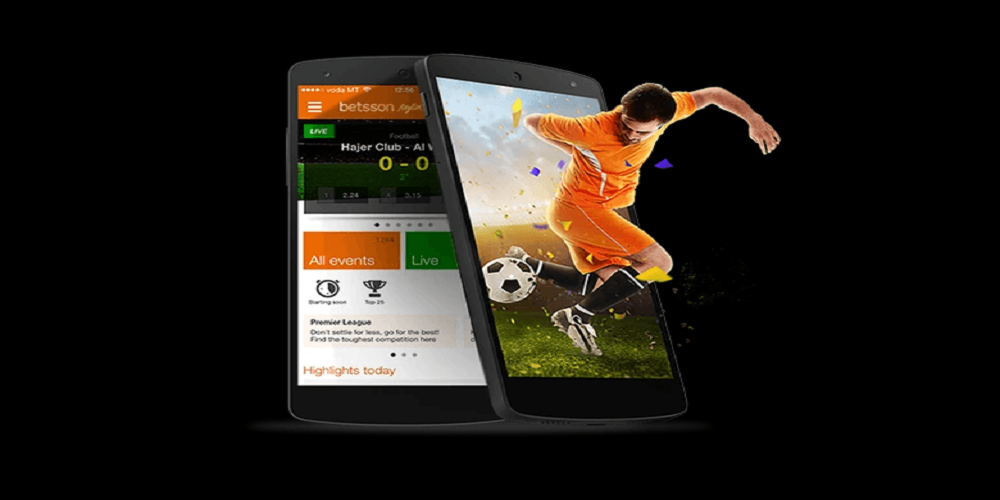quem é o dono da vaidebet
mitzvahceremonies.com:2024/11/8 6:20:29

quem é o dono da vaidebet

None
omo o principal concorrente. Como relatado anteriormente pela The Root, Paramount
terminou o processo de licitação quando Perry se recusou 🍋 a mover quem é o dono da vaidebet oferta de USR$ 2
ilhões para US US$ 3 bilhões da corporação pedindo preço. O que realmente foi 🍋 errado
a BIT Sale da Paramonmonte? - The Raiz theroot: o que-realmente-com-
audiências negras
0 5 apostas

Heads-up poker is the art of playing against just one opponent. I say art because,
unlike ring games or tournaments, 🛡 heads-up poker truly is an art form.
In most poker
games, you will face many opponents and only be directly involved 🛡 in a small percentage
of the overall hands. In heads-up, however, you will pay blinds each hand and be put
🛡 into many difficult situations.
For that reason, you will need to learn to play poker
quite differently than you may be 🛡 used to playing in other formats of the game.
In this
guide to playing heads-up poker, we will tackle some main 🛡 concepts of such games, teach
you how to approach playing in and out of position, and give you a few 🛡 pointers to lead
you in the right direction.
Mind that this is only the first step towards becoming a
great heads-up 🛡 poker player, as it can take years to master, even for the best of
us.
Main Differences between Heads Up and 🛡 Ring Games
The obvious difference between a
6-max or ring game and heads-up is the number of players at the table, 🛡 and this one
would be obvious even to a completely ignorant bystander.
Since it’s only you against
your opponent in a 🛡 heads-up match, many things change quite drastically. First and
foremost, both you and the other player are in blind positions 🛡 on each hand.
The player
on the button also acts as the small blind, while the other player pays the big 🛡 blind.
Like in all other formats, the player with the button plays last on all following
streets but will act 🛡 first pre-flop.
As you are always in the blinds, and the number of
opponents is minimal, you have every reason to 🛡 play way more hands than you would in a
ring game. In fact, in many heads-up matches, it is correct 🛡 to play almost all hands
from the button and a very high percentage of hands in the big blind as 🛡 well.
While you
could previously profitably play various hands in position and wait to make a big hand
in a loose 🛡 game, you don’t have that kind of privilege in a heads-up match.
Instead,
you will be forced to play each and 🛡 every hand yourself and battle for every chip out
there with everything you got.
So how do you do that? Let’s 🛡 start at the beginning and
talk about preflop play and the way you should construct your button and big blind
🛡 ranges.
Playing from the Button in Heads-Up Games
Holding the button in a heads-up game
gives you a huge advantage. You know 🛡 your opponent has a random hand, and they are the
only thing standing between you and the dead money in 🛡 the pot.
For that reason, you
will need to start by making a raise with a very high percentage of hands, 🛡 much higher
than you ever did in other game formats. If you are wondering how much exactly, this
will depend 🛡 on several factors.
First and foremost is the way your opponent responds to
your raises. As a general rule of thumb, 🛡 you should be raising more hands against
opponents who fold a lot and fewer hands against opponents who fold infrequently.
If
🛡 they fold a lot, raise 100% of your hands.
If they fold more than average, raise 90% of
your hands.
If they 🛡 fold on average, raise 85% of your hands.
If they never fold, raise
75% of your hands.
However, something must be said 🛡 about how much you raise the button
before the flop since your raise size should depend on your raise frequency.
The 🛡 more
often you are going to raise, the smaller your raises should be, and vice versa. If you
are going 🛡 to raise 100% of your hands, a min-raise will suffice.
As your raise
frequency goes down, so too should your raise 🛡 size. Since you are raising a stronger
range, you can get away with raising 2.5x, 3x, or even 3.5x.
To test 🛡 the waters, you
can start by opening about 85% of your hands from the button and using a 2.5x raise
🛡 size. As you see how your opponent reacts to your raises, you can adjust your raise
size and your raise 🛡 frequency accordingly.
Playing from the Big Blind in Heads-Up
Poker
Playing on the button will give you an advantage and the ability 🛡 to play nearly
every hand in your range. However, you will still have to play 50% of all hands from
🛡 the big blind.
The question becomes, how often should you continue with your hand once
an opponent raises the button, which 🛡 is what they are going to do most of the time.
The
answer to this question will depend a lot on 🛡 the raise size your opponent uses. Against
min-raises, you will be able to profitably defend a wide range of hands, 🛡 while against
bigger raises, you will need to fold more since you are getting less favorable pot
odds.
However, you must 🛡 also remember that you should aggressively play a good chunk of
your hands in the big blind as well, 3-betting 🛡 the original raise instead of just
calling.
Since we know that even the tightest players out there still raise about 80%
🛡 of their buttons in heads-up poker, we will want to 3-bet quite liberally.
The wider
your opponent raises, the more hands 🛡 you can afford to play for either a call or a
raise.
You can use the following rule of thumb to 🛡 construct your 3-betting
range:
Against a wide opening range, 3-bet a polarized range of hands
Against a tight
opening range, 3-bet a 🛡 merged range of hands
A polarized range includes all your best
and all your weakest hands in the 3-betting range, while 🛡 a merged range contains the
strong and the semi-strong hands in your 3-betting range.
The overall 3-betting range
will depend heavily 🛡 on the raise size your opponent is using. However, against a
min-raise, which is fairly standard sizing, you should be 🛡 3-betting a lot.
Against a
formidable opponent who raises 80% of hands to 2x, you should be 3-betting with all the
🛡 big pairs, A8s+, AT+, QJ+, 64s+, and T8s+. All other gappers and suited hands can be
played as a call, 🛡 along with many off-suit hands.
If the same opponent was raising 100%
of all hands, you could switch your range to 🛡 include more bluffs, hands like X2s, and
X3s, while just calling with hands like K8s, 86s, 64s, etc.
The weaker your 🛡 opponent's
range is, the more you will want to polarize your own 3-betting range to include more
bluffs while calling 🛡 with medium-strength hands that still play well against the 100%
range of hands.
You will also want to think about your 🛡 3-bet size. Against a min-raise,
a 3-bet size of about 8x the big blind is recommended, and you should keep 🛡 upping this
along with your opponent’s original raise size.
Why Balance Matters in Heads-up
Poker
There is a lot of value in 🛡 balancing out your ranges across the board in every
form of poker. However, it becomes that much more important in 🛡 heads-up games.
In
tournaments or cash games, you only encounter the same players occasionally, and you
may even play with certain 🛡 players just once in your life. On the other hand, once a
heads-up game has started, you and your opponent 🛡 will quickly start to get history with
each other, which can lead to certain conclusions.
If you play a heavily exploitative
🛡 style of poker against an opponent in a heads-up match, there is a big chance they will
realize it and 🛡 start to counter you.
This is especially true if you are playing a
heads-up game against a player you know to 🛡 be a competent heads-up player, but it can
be true even against weaker opponents.
If you try to bluff every street 🛡 in every hand,
you will start to get called down quite wide. If you only bet when you have a 🛡 big hand,
you will not get value in such situations.
While you can still play exploitatively if
your opponent is very 🛡 bad and not aware of the situation, you should strive towards
balance while only exploiting to a certain extent.
For instance, 🛡 if you notice your
opponent likes to call bets a bit too wide, you can counter this by bluffing a 🛡 bit less
and value betting a bit more.
However, you can't just stop bluffing altogether, as this
will result in your 🛡 opponent realizing what you are doing and easily countering your
simple strategy.
Many of the best heads-up players in the world 🛡 swear by the GTO
approach and try to play the same way against basically any opponent, realizing that
playing in 🛡 an unexploitable way is the surest way to win in the long run.
While no man
can mimic the solvers to 🛡 perfection, a semblance of a GTO poker strategy does seem to
do wonders in the heads-up streets and is likely 🛡 the best way to beat anyone in the
world at heads-up poker.
Exploiting Players’ Tendencies in Heads-Up Poker
While the GTO
strategy 🛡 works very well in heads-up matches, an exploitative approach still has a lot
of merit, especially when you are playing 🛡 against less skilled players.
Playing at
lower stakes or in tournaments, you will often come across players whose game is far
🛡 from balanced, which you can exploit to a great extent.
Since you will be the only
player at the table, you 🛡 may be able to print EV from each mistake your opponent makes.
Once you spot a pattern of mistakes, you 🛡 can create perfect strategies to counter
them.
A great example of this is a player who c-bets every flop after they 🛡 raise
pre-flop or one who only ever c-bets with very strong hands.
In both scenarios, you can
develop a strategy that 🛡 heavily exploits their tendencies. You can bluff more against
the former and fold more against the latter, making extra EV 🛡 in both cases.
This is a
simplified example of how an exploitative approach can work wonders in heads-up
matches, but it 🛡 is one that actually happens in real games quite often.
Many players
might also fold too much to c-bets or 3-bets 🛡 and 4-bets before the flop, all of which
are exploitable tendencies.
Using your poker tracking software between sessions to look
for 🛡 such tendencies is the best way to prepare yourself to play a certain player you
are likely to face again.
The 🛡 Mental Game of Heads-up Poker
Technical and strategic
baselines are very important in any form of poker, and probably even more 🛡 so in
heads-up. However, heads-up can also turn into mental warfare at times.
With both you
and your opponent doing your 🛡 best to win every chip that's ever put into the pot, the
leveling wars are almost certain to happen.
As you 🛡 attempt to adjust to your opponent’s
tendencies, they try to adjust to yours. In other cases, your opponent might just 🛡 tilt
and start playing a different game than their baseline, which you should still look to
adapt to.
In either case, 🛡 heads-up poker will require you to remain focused and keep
your head in the game. Playing like a robot won't 🛡 get you far unless you can truly
mimic the solvers to a high extent, which is a very difficult level 🛡 of play to
reach.
Mental acuity and preparation will be key if you plan to make a career of any
sort 🛡 out of heads-up poker, so make sure you practice poker regularly and remind
yourself of what's important and what's not 🛡 at the tables.
Expect variance in heads-up
games just as you would in any other poker format, and be prepared to 🛡 go on downswings
and see your bankroll go up and down as you battle your way through the ranks of
🛡 heads-up poker players.
Read about proper bankroll management.
Try Pokercode For
Free
If you have the feeling you need to sharpen up your 🛡 game then Pokercode is a great
place to start. Sign up for a free account and set your first steps 🛡 towards becoming a
better poker player.
By signing up for a free account you will benefit from:
Access to
a list of 🛡 curated study content, including one of Fedor’s study videos
Participate in
our free public coaching
An inside look at how the Pokercode 🛡 community studies
Sign up
and don’t miss out!
artigos relacionados
2024/11/8 6:20:29